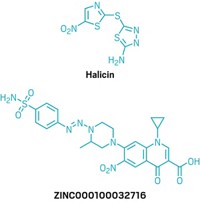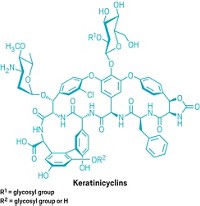Advertisement
Grab your lab coat. Let's get started
Welcome!
Welcome!
Create an account below to get 6 C&EN articles per month, receive newsletters and more - all free.
It seems this is your first time logging in online. Please enter the following information to continue.
As an ACS member you automatically get access to this site. All we need is few more details to create your reading experience.
Not you? Sign in with a different account.
Not you? Sign in with a different account.
ERROR 1
ERROR 1
ERROR 2
ERROR 2
ERROR 2
ERROR 2
ERROR 2
Password and Confirm password must match.
If you have an ACS member number, please enter it here so we can link this account to your membership. (optional)
ERROR 2
ACS values your privacy. By submitting your information, you are gaining access to C&EN and subscribing to our weekly newsletter. We use the information you provide to make your reading experience better, and we will never sell your data to third party members.
Pharmaceuticals
Antimalaria Drugs
July 19, 2010
| A version of this story appeared in
Volume 88, Issue 29
Reviving the malaria fight with “open innovation” after public disclosure of potential antimalarial leads by the pharmaceutical consortium is a great idea (C&EN, May 24, page 11). I truly thank them. This open innovation should provide new impetus to revisit some specific parasite targets such as the malaria CDK (cyclin-dependent kinases).
A few years ago, my group at Walter Reed Army Institute of Research published two articles showing a 3-D pharmacophore model for inhibition of a Plasmodium falciparum CDK (also known as Pfmrk) developed from a set of several structurally diverse kinase inhibitors with a wide range of activity (J. Med. Chem. 2004, 47, 5418; Expert Opin. Drug Discov. 2007, 2, 1115). Using the model as a search template for virtual screening of compound databases, we were able to discover 16 new potent Pfmrk inhibitors.
The compound (SJ000025081) shown in the C&EN article maps perfectly well onto our published pharmacophore model and predicts excellent antimalarial activity. Thus the model may be a useful tool for rapid selection of inhibitors for the malarial kinases.
Apurba K. Bhattacharjee
Silver Spring, Md.




Join the conversation
Contact the reporter
Submit a Letter to the Editor for publication
Engage with us on Twitter